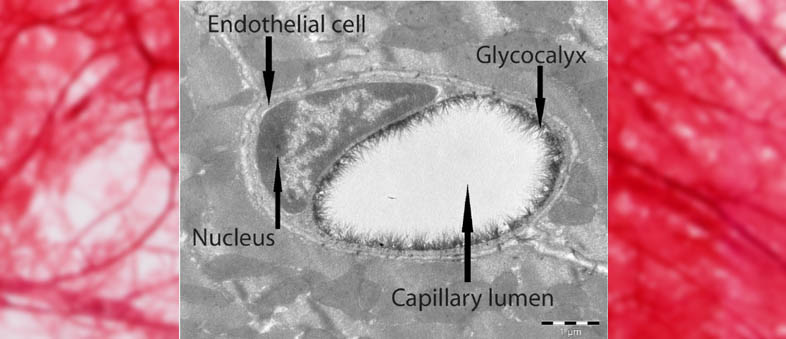The Function of Glycocalyx in Blood Vessels and Capillaries
Glycocalyx serves as the mediator for cell-to-cell interactions and protects the cell membrane from fluid shearing forces allowing the cell membrane to maintain its integrity. Glycocalyx is a highly hydrated fibrous meshwork within blood vessels and capillaries that covers the endothelial cells. This layer functions as a barrier between a cell and its surroundings. Specifically, the endothelial glycocalyx regulates vascular permeability, modulates the interaction between blood and endothelial cells. The generic structural components of glycocalyx are proteoglycans and glycoproteins, other compositional components are determined by the specific cell type and other physiochemical conditions.
Fluid shear inside the capillaries modulates the production of the biochemical signal nitric oxide which signals the muscle cells around the capillaries to contract or relax to regulate blood flow. Nitric oxide is a regulatory molecule and its inhibition due to endothelial injury or degradation contributes to cardiovascular disease.










